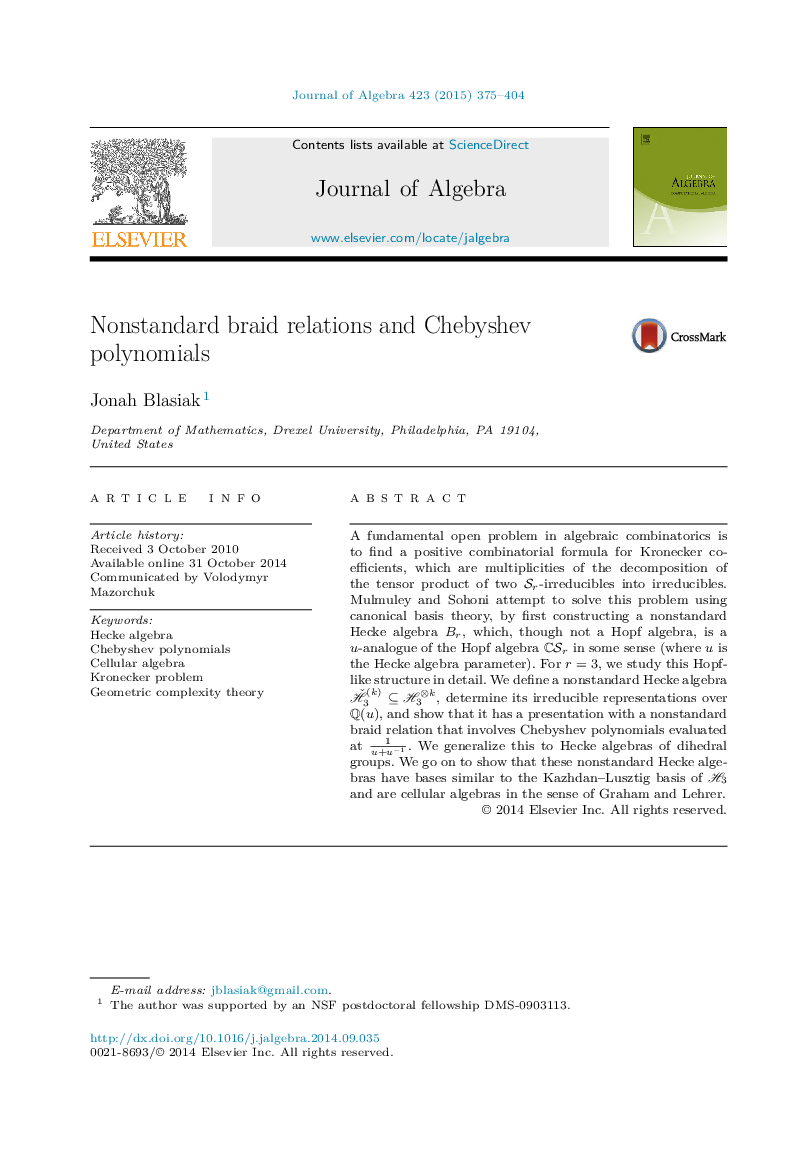| Article ID | Journal | Published Year | Pages | File Type |
|---|---|---|---|---|
| 6414470 | Journal of Algebra | 2015 | 30 Pages |
A fundamental open problem in algebraic combinatorics is to find a positive combinatorial formula for Kronecker coefficients, which are multiplicities of the decomposition of the tensor product of two Sr-irreducibles into irreducibles. Mulmuley and Sohoni attempt to solve this problem using canonical basis theory, by first constructing a nonstandard Hecke algebra Br, which, though not a Hopf algebra, is a u-analogue of the Hopf algebra CSr in some sense (where u is the Hecke algebra parameter). For r=3, we study this Hopf-like structure in detail. We define a nonstandard Hecke algebra HË3(k)âH3âk, determine its irreducible representations over Q(u), and show that it has a presentation with a nonstandard braid relation that involves Chebyshev polynomials evaluated at 1u+uâ1. We generalize this to Hecke algebras of dihedral groups. We go on to show that these nonstandard Hecke algebras have bases similar to the Kazhdan-Lusztig basis of H3 and are cellular algebras in the sense of Graham and Lehrer.
